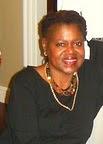Friday, November 23, 2007
Is It ME, Babe?
movies
Is It Me, Babe?
Todd Haynes' fractured portrait of Bob Dylan.
By Dana Stevens
Posted Tuesday, Nov. 20, 2007, at 6:37 PM ET
--------------------------------------------------------------------------------
"All I can do is be me, whoever that is," Bob Dylan told an interviewer in 1965. I'm Not There, Todd Haynes' crazy quilt of a Dylan biopic, is the life story of that "whoever." Like the singer's gnomic comments to the press, the movie can be maddeningly slippery; like his music, it's fierce, thrilling, and unapologetically itself.
Haynes' innovation is to separate the epochs of Dylan's life into six overlapping story threads, each with its own Dylan-like figure (none of whom are actually named "Bob Dylan"). The earliest incarnation, Woody (Marcus Carl Franklin), is an 11-year-old black child who rides the rails with his guitar, at one point visiting his namesake, folk legend Woody Guthrie, on his deathbed. After undergoing various trials on the road (including a near-swallowing by a comically low-tech animated whale), Woody makes his way to New York—and suddenly becomes Jack Rollins (Christian Bale), a protest singer on the Greenwich Village cafe scene. As the film goes on, he—whoever that is—will reappear as a Brando-like movie star (Heath Ledger), a chain-smoking dandy named Arthur (Ben Whishaw), an aging Billy the Kid (Richard Gere), a middle-aged born-again pastor (Bale again), and most memorably, as the twitchy, misanthropic rock star Jude Quinn (Cate Blanchett).
Cate Blanchett is Bob Dylan: Could there be a sexier above-the-title tagline? But Haynes' casting choice functions as far more than a clever stunt. The gender reversal introduces a strangeness that makes us look at both performers through new eyes. And though you soon forget that Blanchett is a woman—her channeling of the Don't Look Back-era Dylan is that uncanny—you never for a moment forget that she, like Jude Quinn, is a performer. Blanchett shares Dylan's knack for moving audiences deeply without disclosing much of herself, and her Jude is a magnetic cipher, seductive without being likable. When a British journalist (Bruce Greenwood), intent on exposing the self-invented singer as a fraud, questions him harshly in the back seat of a limo, you don't know whose side to take: Yes, the interviewer is a reductive prig, but Jude is a self-important asshole. Blanchett conveys all of this while still keeping you wrapped around her (or is it Jude's?) little finger. Before, I thought of Cate Blanchett as a beautiful and gifted actress. After this crush-inducing performance, I'm seriously considering flying to Australia to stalk her.
The press notes attempt to classify the different Dylans by assigning each one an epithet: Bale is "the prophet," Blanchett "the innovator," Whishaw "the enigma," etc. But watching the film, no glossary is needed. The movie is layered enough to reward a second viewing, but so nimbly constructed that, once you've caught on to its logic, it all makes sense. Only the Richard Gere segment, a kind of surreal sequel to Sam Peckinpah's 1973 Western Pat Garrett & Billy the Kid (which featured Dylan as both singer and actor) stands out as a dud—I confess that whenever I heard those wagon wheels a-turnin', I started to tune out.
Haynes is a technical whiz of a filmmaker, a master of pastiche who can shift styles like Dylan himself. His last film, Far From Heaven, was a flawless mockup of a Douglas Sirk tearjerker that laid bare the secrets that 1950s domestic dramas had to repress: the closeted husbands, the sexually starved wives. Here, Edward Lachman, Far From Heaven's director of photography, works up a different look for each story thread: bleached-out black-and-white for the Jude Quinn section, lush greens for the rural settings where Woody plies his trade, and '70s earth tones for the scenes in which Ledger's Robbie and his painter wife, Claire (the bewitching Charlotte Gainsbourg), watch their marriage fall apart. Just as Far From Heaven deconstructed the weepie genre, I'm Not There tears open the by-now formulaic rock biopic and puts it back together again, fascinatingly askew.
Perhaps because his project was unconventional enough to appeal to the notoriously private Dylan, Haynes also managed to land the rights to a number of classic songs ("Tombstone Blues," "Ballad of a Thin Man," "Idiot Wind," "I Want You"), some performed by Dylan himself, some pleasantly if unremarkably covered by Stephen Malkmus, Sonic Youth, Jeff Tweedy, and others. Even if you're one of those viewers who finds Haynes an overly cerebral director (I'm not), this music provides an emotional scaffolding that sustains the film. When Dylan himself appears in some old concert footage just before the final credits, the close-up on his real, live, harmonica-playing face is all the more affecting in light of the multiple Dylans who've come before: Hey, it's him! Whoever that is.
Subscribe to:
Post Comments (Atom)





No comments:
Post a Comment